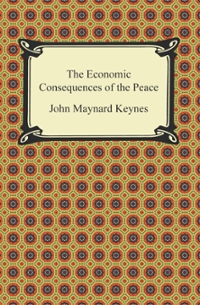Clearly indicate all the calculations...its complete
EXERCISE Question 1 (Efficiency Wage) Suppose a firm observes the following relationship between the real wage and the effort exerted by its workers: Real Wage | Effort 14 10 12 14 16 46 18 51 The marginal product of labor is given by MPN = 260-2N 30 where E is the effort level and N is the number of employment. 1. If the firm can choose only one of the six wages above, what it should choose? 2. How many workers will it employ? 3. Suppose that there are 200 workers willing to work at a real wage of $8. What will happen to the number of workers employed by the firm? Question 2 (Numerical Example of IS-LM/AD-AS analysis with sticky price ) An economy is described by the following equations. Desired Consumption: C = 140 + 0.5(Y - T) - 250r Desired Investment: I'd = 120 - 250r Government Purchases: G = 0 Government Taxes: T = 0 Real Money Demand: L = 0.5Y - 1000r Nominal Money Supply: M = 1150 Full-Employment Output: Y = 500 Assume that the expected inflation is zero. 1. What are the values of r, P, Y, C, I, and L in long-run (full-employment) equilibrium? 2. Beggining in the full employent equilibrium in 1., suppose that the central bank increases the money supply by 75 so that now the money supply equals 1225. In the short run, the price level is fixed at the value we found in 1. What are the values of r, P, Y, C, I, and L in short run equilibrium? 3. Under M = 1225, what are the values r, P. Y, C, I, and L in long-run (full-employment) equilibrium? Question 3 (Keynesian IS-LM model) According to the Keynesian IS-LM model, what is the short run and long run effect of a wave of investor pessimism about the future profitability of capital on the following variables? The answer should be relative to the initial long-run equilibrium levels of each variable. . Output . Real Interest Rate . Employment . Price Level Question 3 (Keynesian IS-LM model) Consider an economy in which all workers are covered by contracts that specify the nominal wage and give the employer the right to choose the amount of employment. The production function is Y = 200VN and the corresponding marginal product of labor is MPN = 100 VN' 1. For a nominal wage of $10, what is the relationship between the price level and the amount of labor demanded by firms? 2. Using the same nominal wage, what is the relationship between the price level and the amount of output supplied by firms?4) The readings for this week include a New York Time: story for August 5, 2010 describing an emergency order barring wheat exports from Russia. Read the article and then use appropriate supply and demand diagrams to illustrate the positions of the Russian and 1.1.3. wheat industries for each of the following dates: - August 1, EM? {i.e. roughly one year before the announcement) - August 1, Zl [four days before the announcement} 5) [n the basic supply-demand graphs we use in class, we describe show the market reaching an equilibrium price in which the quantity supplied equals the quantity demanded, As the graph below shows, in July 2005 when the economy was fairly strong, there was a roughly constant inventory of about 2.5 million unsold homes throughout the year. Today, there is an inventory of about 4.? million unsold homes. lEtstittgHome Intention: Esrrrrrrssrrsrrrr mhllcdlmlmmmf Image crummy of Bill McBride. Used with permission. Do these inventories, even in a good year, mean the market for single family homes is always in crisis? Do they mean the single family homes market is in crisis today? Give a brief explanation of what you think was going on in the market in 20115 and what you think is going on today. if it is useful, illustrate your answer with appropriate diagrams. 6) The readings for Tuesday, September 14, include a New York Times story on a proposal by the U.S. postal service to increase the fee for a first class stamp. Read the story and answer the following questions: a) Below are four possible estimates of the price elasticity of demand for first class mail service. Given the post office's rate proposal, explain which of the estimated elasticities they think must be correct. If the rate proposal is consistent with more than one estimated elasticity, explain why. E +. =+1.3 -.2 = -1.2 b) Looking back over the last two decades, how, if at all, would you have expected the growth of email to affect the demand curve for first class mail? In your answer, consider both shifts in the curve and changes in elasticity. Would you expect the development of instant messaging and Twitter to have similar effects on the demand for first class mail? Explain why or why not. Note for Problem 2: Problem 1.1 in NS 11'th edition begins with the same data as Problem 1.2 in the 10'th edition but substitute the following questions: a. Graph the points of these supply and demand curves for orange juice. Be sure to put price on the vertical axis and quantity on the horizontal axis. b. Do these points seem to lie along two straight lines? If so, figure out the precise algebraic equation of these lines. (Hint: If the points do lie on straight lines, you need only consider two points on each of them to calculate the lines.) c. Use your solutions from part b to calculate the "excess demand" for orange juice if the market price is zero. d. Use your solutions from part b to calculate the "excess supply" of orange juice if the orange juice price is $6.00 per gallon









